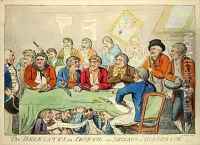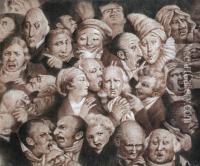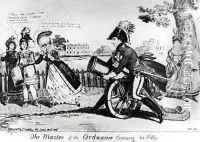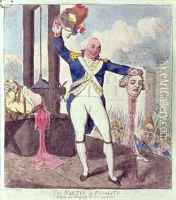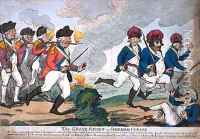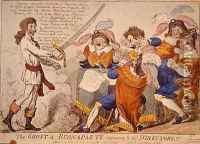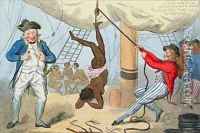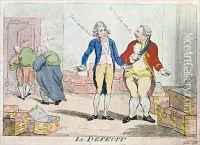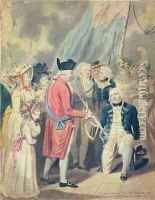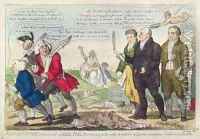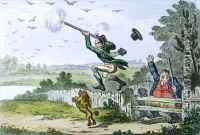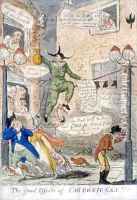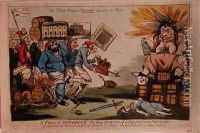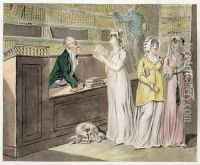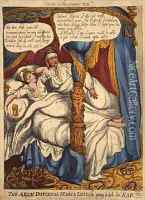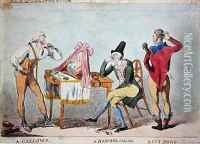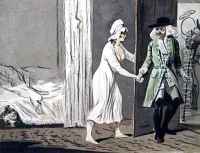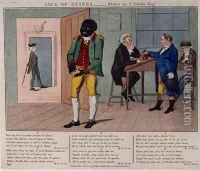Isaac Cruikshank Paintings
Isaac Cruikshank was a Scottish painter and caricaturist, born in Edinburgh in 1756. He is often remembered for his social and political satire, which was predominantly expressed through his caricatures. Cruikshank's early life and training are not well-documented, but it is known that he moved to London, where he pursued a career in art.
In London, Cruikshank became associated with a circle of artists and writers who were critical of the establishment. He began to produce etchings and illustrations that reflected the concerns and interests of the day, such as the excesses of the aristocracy, the corruption of politicians, and the plight of the poor. His work was characterized by its sharp wit and often controversial subject matter.
Isaac Cruikshank collaborated with several leading publishers of his time, which helped to disseminate his work widely. He also worked with his two sons, George and Robert Cruikshank, both of whom would go on to become prominent artists in their own right. His sons inherited his talent for satire and continued the family tradition in the arts.
Cruikshank's work was influential in the development of British caricature and he is often cited as a precursor to later satirical artists, such as James Gillray and Thomas Rowlandson. His ability to capture the public imagination with his keen observations of society made him a popular figure during his lifetime.
Isaac Cruikshank died in London in 1811. His legacy lives on through his contributions to the field of caricature and satire, and his works are preserved in various collections and museums, including the British Museum and the National Portrait Gallery in London. His art remains a valuable historical record of the social and political climate of his times.
